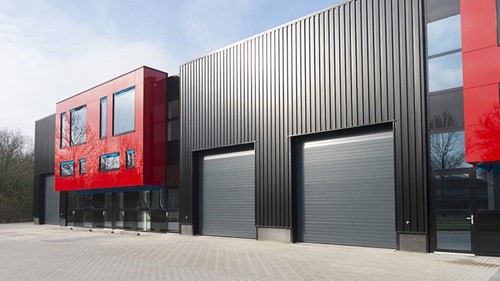5 things to consider when getting started in commercial property
Search volumes on commercial property have reached an all-time high, quality commercial assets are severely scarce and yields are the highest they’ve been in almost a decade - here are the top five things you need to know to get into the market.
When we read about the property market, it’s safe to say that the focus is almost always on residential.
The conversations with friends and family are similar. But savvy investors have long been aware of how lucrative commercial property investing can be and many more are switching over each day.
In 2021 alone, search volumes on commercial property have reached an all-time high, quality commercial assets are severely scarce and yields are the highest they’ve been in almost a decade.
Commercial property isn’t complicated, it’s just different.
Here are the top five things you need to know when getting started in the market:
Adopt a wealth creation mindset
Shifting from a tax saving or ‘fear’ mindset to an opportunistic or ‘profit’ based mindset is the number one key to commercial investing.
It will help you achieve bigger goals resulting in higher-yielding properties, stronger growth and ultimately more revenue.
And that’s what we’re here for, to make money from our investments, not to purchase the ‘prettiest’ property to make us feel happy and nice.
If you can look past what others see as flaws in a property and value the costs of their remediation in your own mind, you can purchase better based on the numbers compared to your everyday investor.
Similarly if you have a mindset that recognises that sometimes things go wrong, and that you just have to roll with the punches, congratulations, you’re halfway there.
The power of the wealth creation mindset is in recognising the importance of removing all emotion when investing in the commercial market.
When you’ve had a bad day with maintenance or vacancy it helps to remember you’re playing the long game.
A strong positive mindset allows you to back yourself. You know you’ve done your due diligence, crunched the numbers and have purchased a high quality asset and you will make money out of your investment.
Being able to look beyond the day-to-day issues that can stress you out, will put you miles ahead of the rest.
Higher deposits are needed
The maximum loan you would usually receive when buying commercial property would be 60-70 per cent (some banks are offering 80 per cent loans), unlike the 90-95 per cent now available for residential property.
This is because commercial property is ‘deemed’ more risky in their eyes and their loan value ratio (LVR is lower).
Where residential property can be purchased with as little as $50,000 as a deposit to cover all necessary costs, commercial on the other hand is $75,000-$100,000 as a minimum.
So what’s the drawcard? High-quality commercial property has the potential to pay itself off in ten years, compared to the traditional 30 years a residential property might take.
That means all of that money usually going to the bank, after the debt is paid, then goes straight into your pocket, not to mention the fact that it opens up the possibility to leverage equity and purchase a second, third and fourth property.
So the decision to pay a higher deposit in the beginning, starts paying dividends immediately afterwards.
Everything’s up for negotiation
When you purchase a commercial property, unlike residential, you are entering into an agreement with the tenant and their business.
Absolutely every term can be up for negotiation and you will need a seasoned lawyer and negotiator in your corner to make sure you understand what you are signing up for.
On the flip side, if you know what you’re doing, you can use this to your advantage and secure a great deal.
Potential for longer vacancies, but, also for longer leases
Signing a commercial lease is a huge financial commitment for tenants.
This coupled with commercial property having increased exposure to economic cycles, and, managing the end of a lease – where you may be required to make repairs or undertake maintenance – all mean that you need to be prepared for longer vacancies.
The great news is that if you choose a high-quality commercial asset in a high-demand, low-supply area, you can easily mitigate this risk, as these will always be snapped up by tenants.
If you purchase a commercial property in a poor location and the building is in disrepair, then of course the vacancy periods will be longer.
Investors need to carefully assess this relatability potential. Such factors include the quality of the building, the location, rent levels and the state of the general market around it.
Getting the due diligence right will help ensure that the property won’t stay vacant for long.
Not all assets are created equal
Commercial property can be divided into four distinct asset classes.
Office space, retail, and industrial and each asset type has its own set of risks and rewards, and each follows trends.
It’s important to understand the fundamentals of each and their relationship to the current market to make sure you are purchasing a winning commercial asset.
Having an understanding of where each asset class is in its cycle and what will still be a solid investment in ten years time will be integral in informing whether you purchase a winning commercial investment over a dud.




















